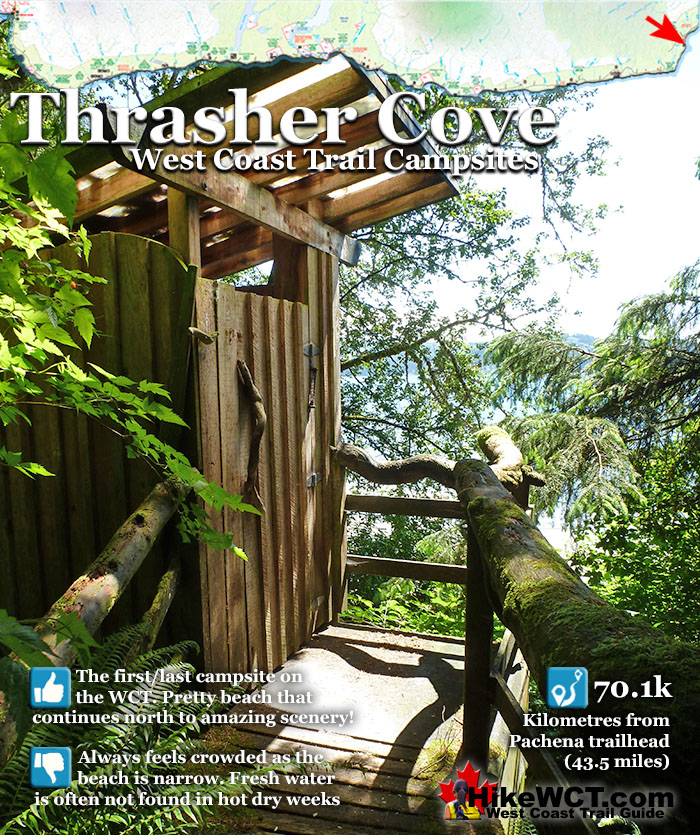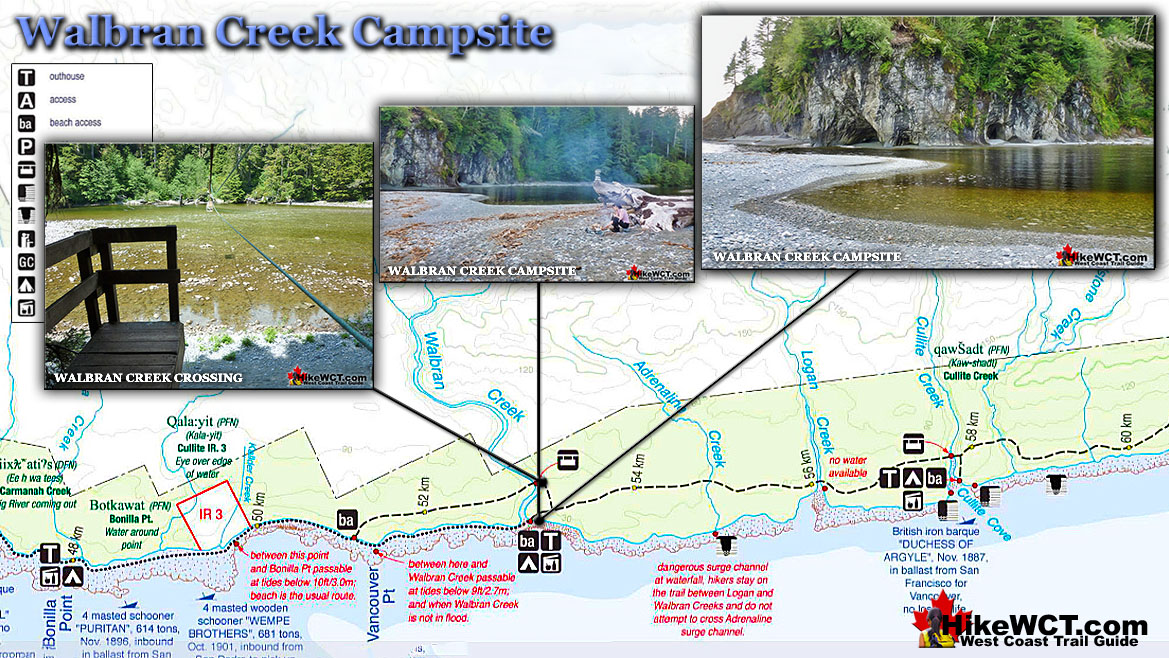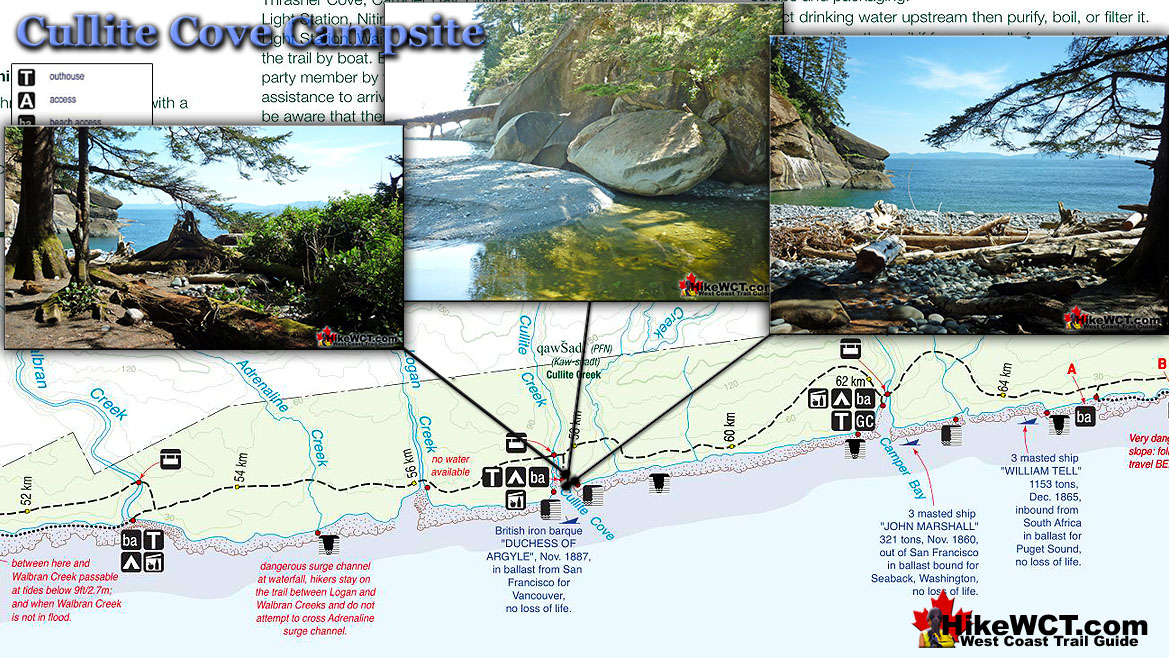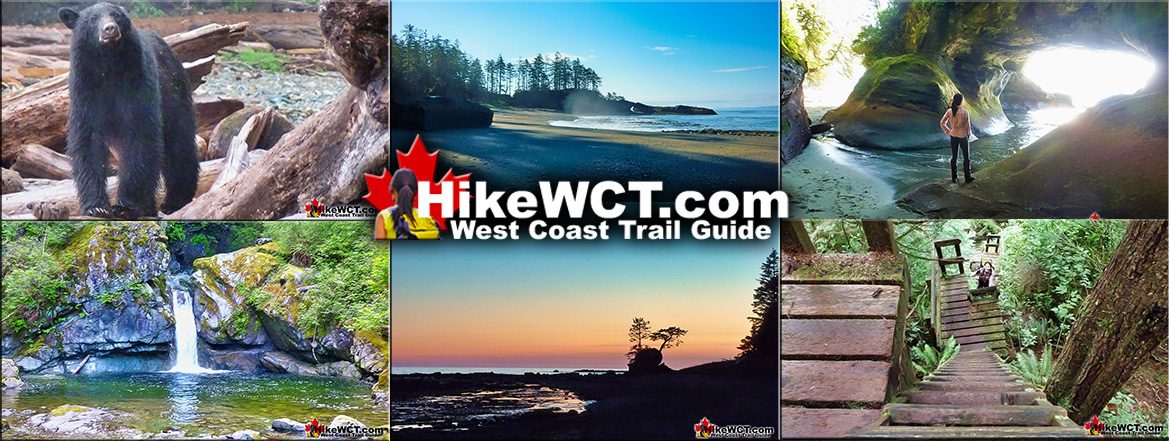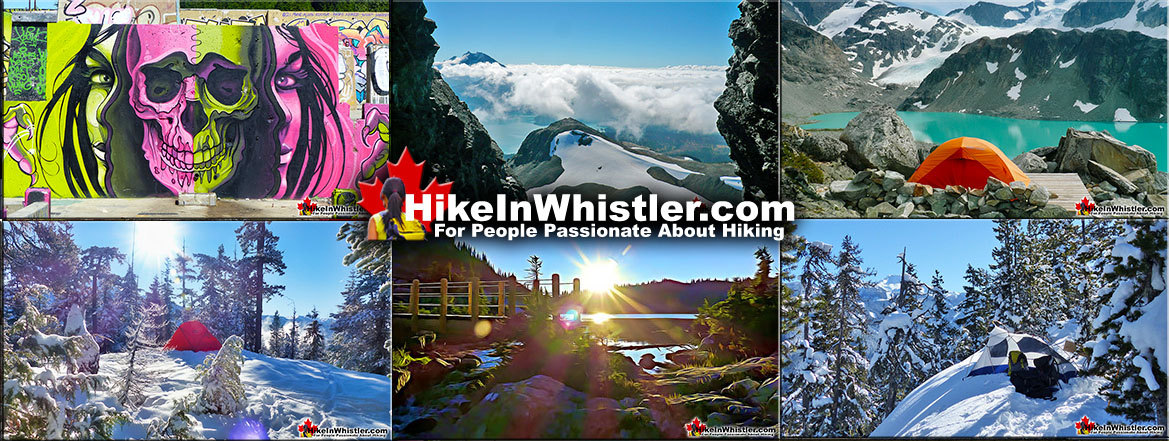![]() Thrasher Cove is the first, or last West Coast Trail campsite you will encounter. It has a lot of good aspects as well as some bad. In terms of good, the beach is very pretty and quite interesting. Not a broad and long beach, the beach at Thrasher is quite varied with rock outcrops and constant bends. You can easily keep yourself amused by wandering down the beach, poking your head around every new corner.
Thrasher Cove is the first, or last West Coast Trail campsite you will encounter. It has a lot of good aspects as well as some bad. In terms of good, the beach is very pretty and quite interesting. Not a broad and long beach, the beach at Thrasher is quite varied with rock outcrops and constant bends. You can easily keep yourself amused by wandering down the beach, poking your head around every new corner.
 Nice, scenic, sandy beach with view
Nice, scenic, sandy beach with view Owen Point caves just 3k away!
Owen Point caves just 3k away! Steep terrain behind the beach is fun
Steep terrain behind the beach is fun Great beach for a campfire
Great beach for a campfire Narrow beach is quickly crowded
Narrow beach is quickly crowded Fresh water dries up mid-summer
Fresh water dries up mid-summer Too close to civilisation
Too close to civilisation Nowhere nice to swim or wash off
Nowhere nice to swim or wash off Boats pass by continuously
Boats pass by continuously Wild & pretty but not serene
Wild & pretty but not serene
West Coast Trail Campsites
![]() Michigan Creek at 12km
Michigan Creek at 12km ![]() Darling River at 14km
Darling River at 14km ![]() Orange Juice Creek at 15km
Orange Juice Creek at 15km ![]() Tsocowis Creek at 16.5km
Tsocowis Creek at 16.5km ![]() Klanawa River at 23km
Klanawa River at 23km ![]() Tsusiat Falls at 25km
Tsusiat Falls at 25km ![]() Cribs Creek at 42km
Cribs Creek at 42km ![]() Carmanah Creek at 46km
Carmanah Creek at 46km ![]() Bonilla Creek at 48km
Bonilla Creek at 48km ![]() Walbran Creek at 53km
Walbran Creek at 53km ![]() Cullite Cove at 58km
Cullite Cove at 58km ![]() Camper Bay at 62km
Camper Bay at 62km ![]() Thrasher Cove at 70km
Thrasher Cove at 70km
Back at the campsite, the beach tent sites are backed by an amazingly abrupt ascent to the main trail. Long ladders that stretch so far as you often can't see the top. Looking up from the bottom of a ladder, you see it narrow in the distance above until all you see is jungle. Often the top of the ladder emerges to a small platform and another staggeringly long ladder! Back down near the beach, still in the wild and steep jungle you find the outhouse. As West Coast Trail outhouses go, this one is one of the best. The Thrasher Cove outhouse is perched up in the trees above the beach and looking around, you feel the embrace of the trees all around giving just narrow glimpses of the ocean. It sits quite high above the ocean despite being just a few metres from the beach. It is a nicely exhilarating feeling to step from the beach into the suddenly deep, tangled forest. Brilliantly green, the forest here glows bright when the sun penetrates through. What a remarkably difference a few metres makes. Sandy bright beach with sweeping ocean views then deep neon green and captivatingly beautiful rainforest world.
Thrasher Cove Campsite Map
You can see on the map below the location of Thrasher Cove 5 kilometres from the Gordon River trailhead and 8 kilometres from Camper Bay. Hikers starting out from the Gordon River trailhead at Port Renfrew get a very challenging start to their hike as the forest route is constantly up and down through beautiful and tough terrain. The thought of another 8 kilometres to Camper Bay motivates most hikers to camp at Thrasher Cove. The forest route to Camper Bay continues to be very challenging, however the beach route, if you can avoid high tides, is quite easy and fast as you follow the mostly flat rock shelf to KM65 before being forced back into the forest for the last 3 kilometres to Camper Bay. The amazing cave at Owen Point is a sight you don't want to miss, though tides may not allow for you to take the beach route.
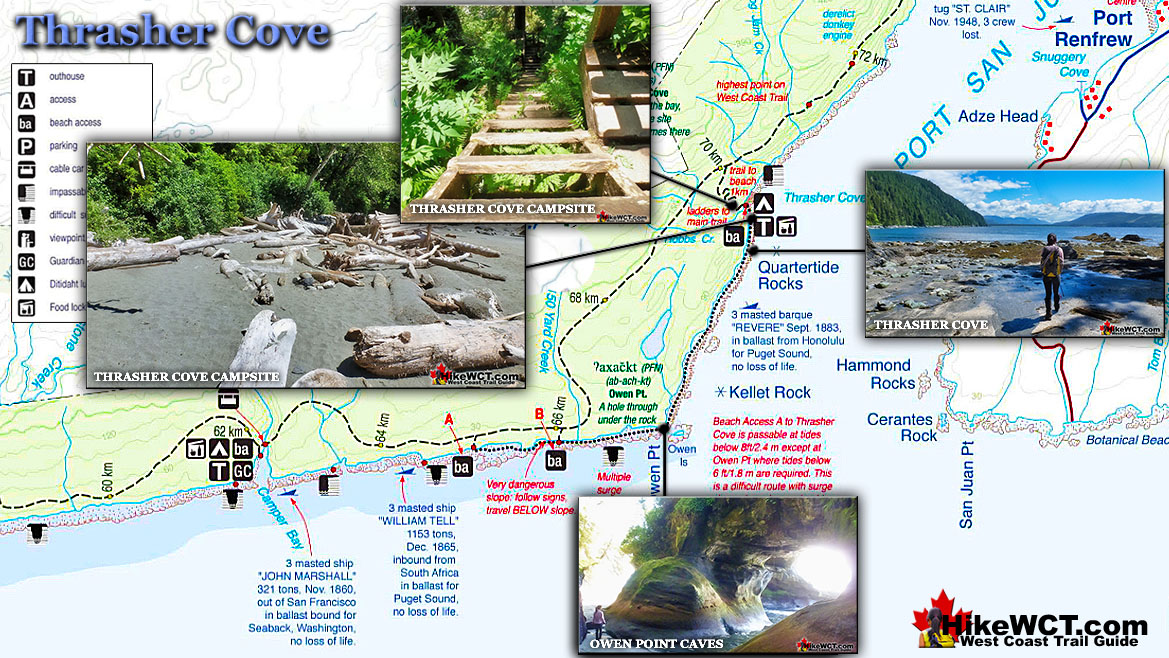
Thrasher Cove Campsite West Coast Trail
The beach at Thrasher Cove is nice and sandy, with lots of driftwood scattered around. Tent sites are high on the beach along the edge of the forest extending in both directions from the forest exit.
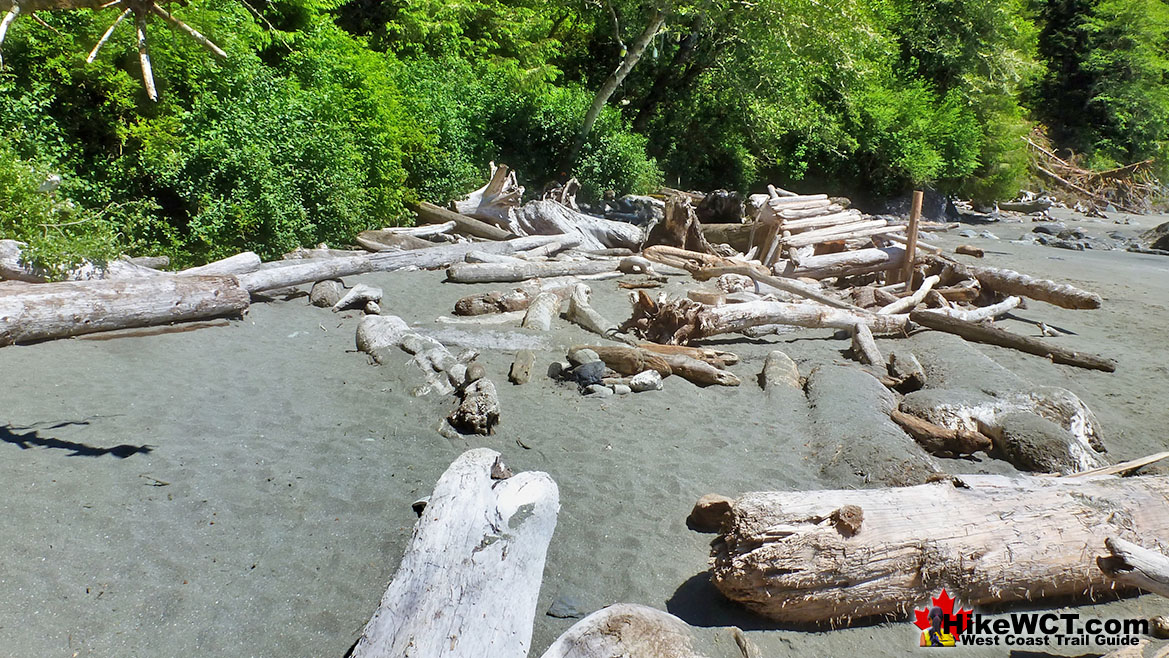
Almost everyone that hikes the West Coast Trail camps at Thrasher Cove so it is generally crowded with fellow campers. You may find yourselves elbow to elbow with a dozen or more tents in an increasingly confined area of the narrow beach and steep terrain at your back. This does, however, give you a wonderful feeling of how the West Coast Trail truly is. Wild rainforest behind you with ladders stretching up staggeringly steep slopes and a beautiful beach and the Pacific Ocean in front of you.
Narrow Beach at Thrasher Cove
The narrow and rocky beach near Thrasher Cove makes it difficult to find a place for your tent and forces everyone to camp along the same section of beach.
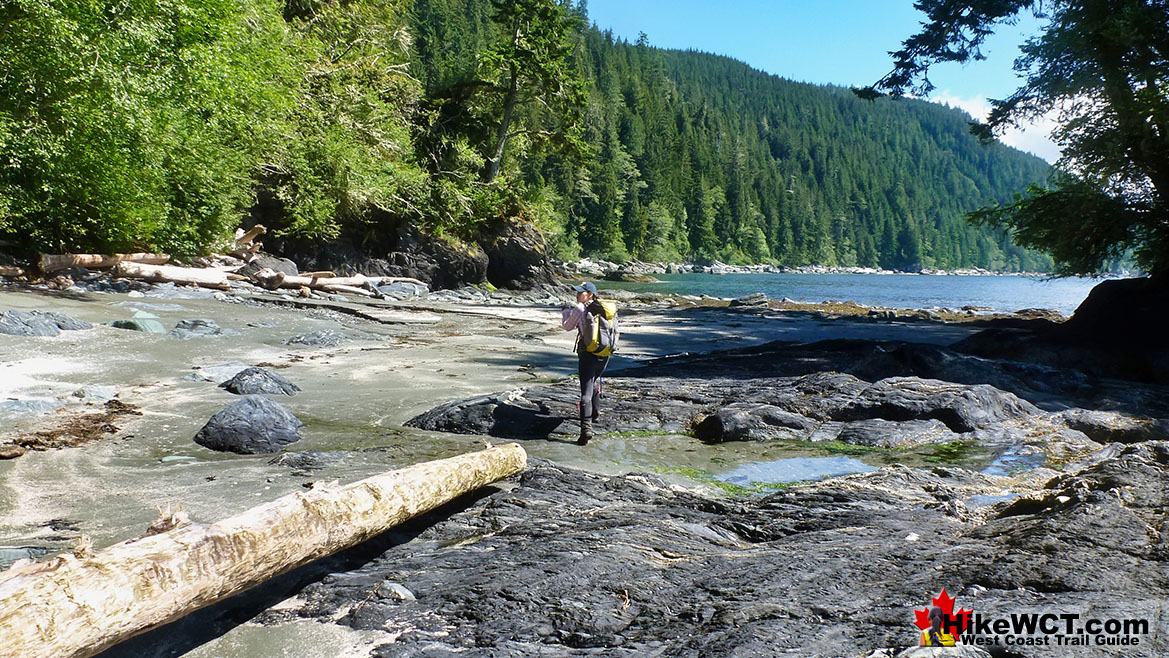
Thrasher Cove Along Port San Juan
Thrasher Cove is well inside Port San Juan and if you are hiking north to south, you get the unfamiliar view of nearby land across the ocean. For the first couple days when you start from the north at Pachena Bay you only see wide open ocean and few boats. At Thrasher Cove you still feel very close to civilization with a constant stream of boats coming and going to Port Renfew. Compared to the open ocean view you get from the campsite at Tsusiat Falls and the occasional sighting of whales, the Thrasher Cove campsite gives you the feeling that you haven't quite started the West Coast Trail.
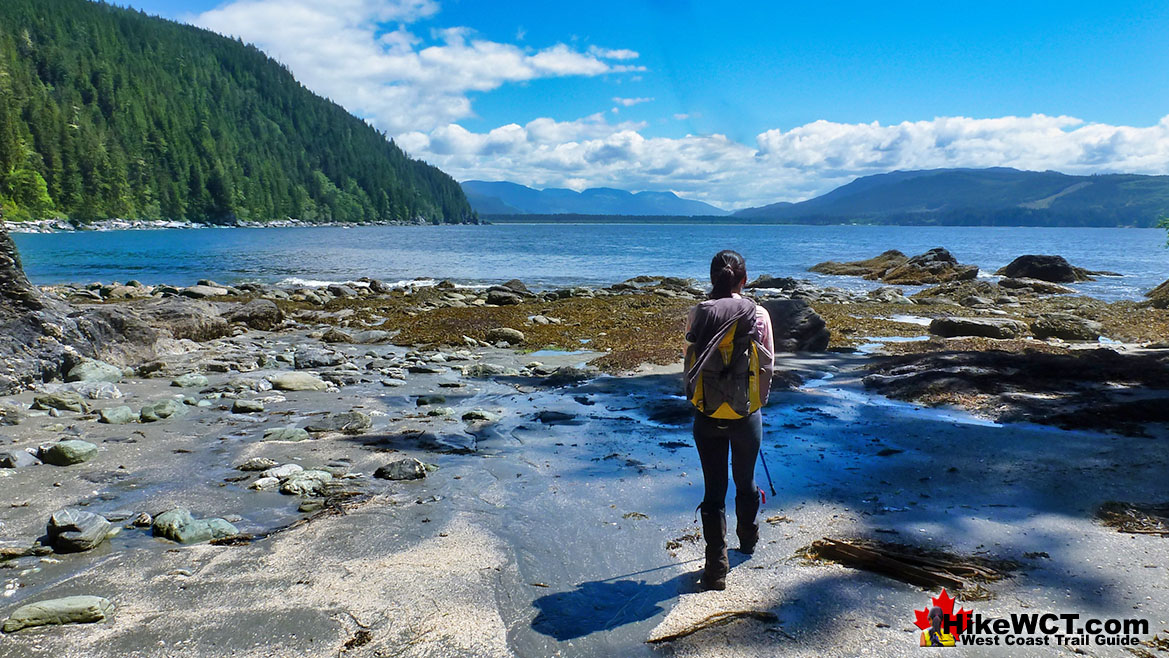
Amazing Forest and Steep Ladders at Thrasher Cove
Climbing or descending the amazing ladders at Thrasher Cove are particularly wonderful. The might be the steepest and most consumed by rainforest ladders along the whole West Coast Trail. Partway up you come to a narrow flat area wrapped in forest and home to possibly the nicest outhouse you've ever seen. Perched on the edge of the jungle you get a beautiful view of Port San Juan through the branches pouring over the steep cliff.
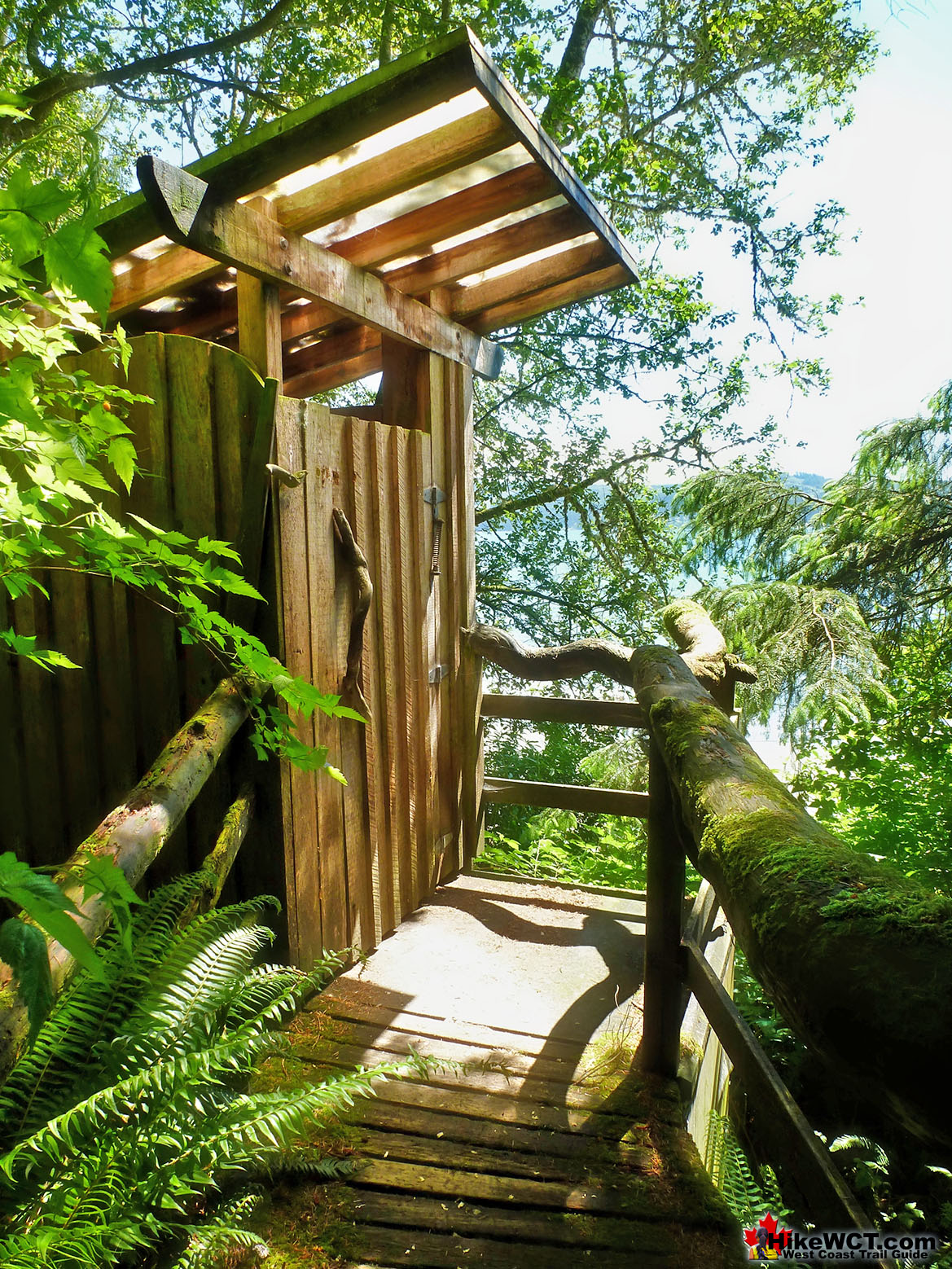
Just a couple meters from the outhouse the ladders disappear into the rainforest above and hint at your challenging hike ahead.
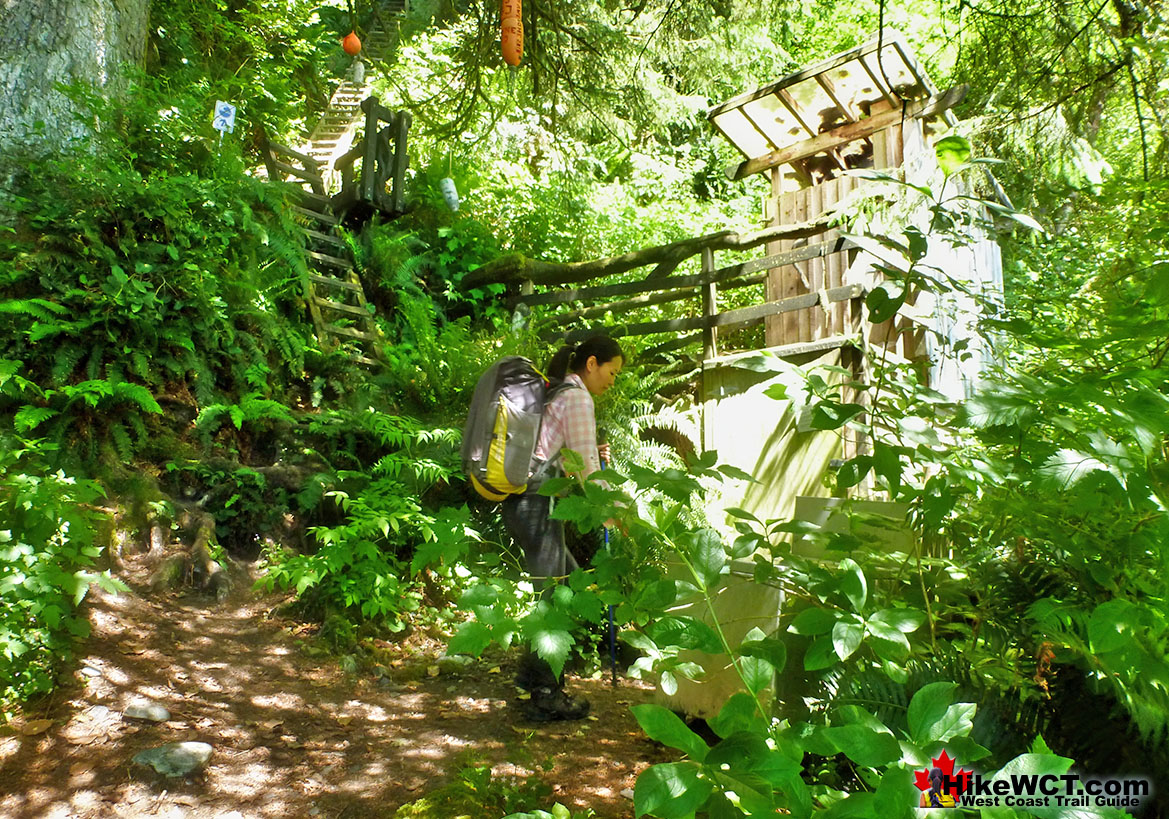
Should You Camp at Thrasher Cove?
You should try to avoid camping at Thrasher Cove because it is always very busy and it is not terribly nice. You may be forced to stay there if you cannot reach the Gordon River trailhead in time for the last boat ferry at 330pm(time may change, check your map and orientation session). If you are starting your hike from Gordon River and want to continue past Thrasher Cove and camp at Camper Creek, you may be blocked by high tides and have to take the arduous forest route that misses the Owen Point Cave and a lot of beautiful coastal scenery.
Ladders Up to the Trail Junction
Steep ladders continue up into the never ending rainforest. It is strange to climb steep ladders and not be able to see how many more ladders connect from the one you are on. All you can see is ladder rungs above you extending up into the trees to keep you guessing. Plenty more ladders are in your future if you are heading either south to the trailhead or north to Camper Bay.
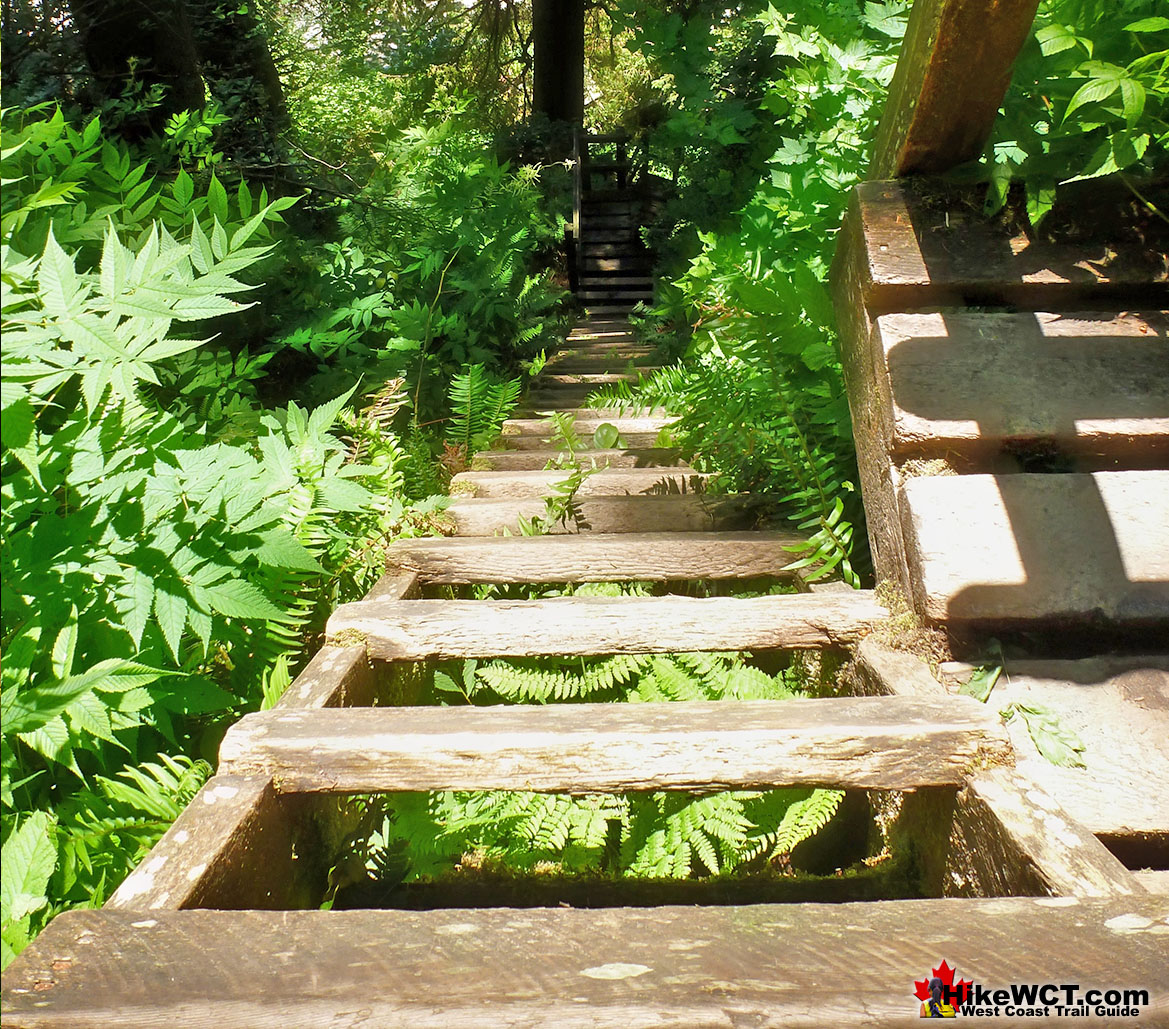
Beautiful & Steep Ladders Near KM72
These fantastic ladders are found near KM72 just 3 kilometres from the trailhead at Gordon River.
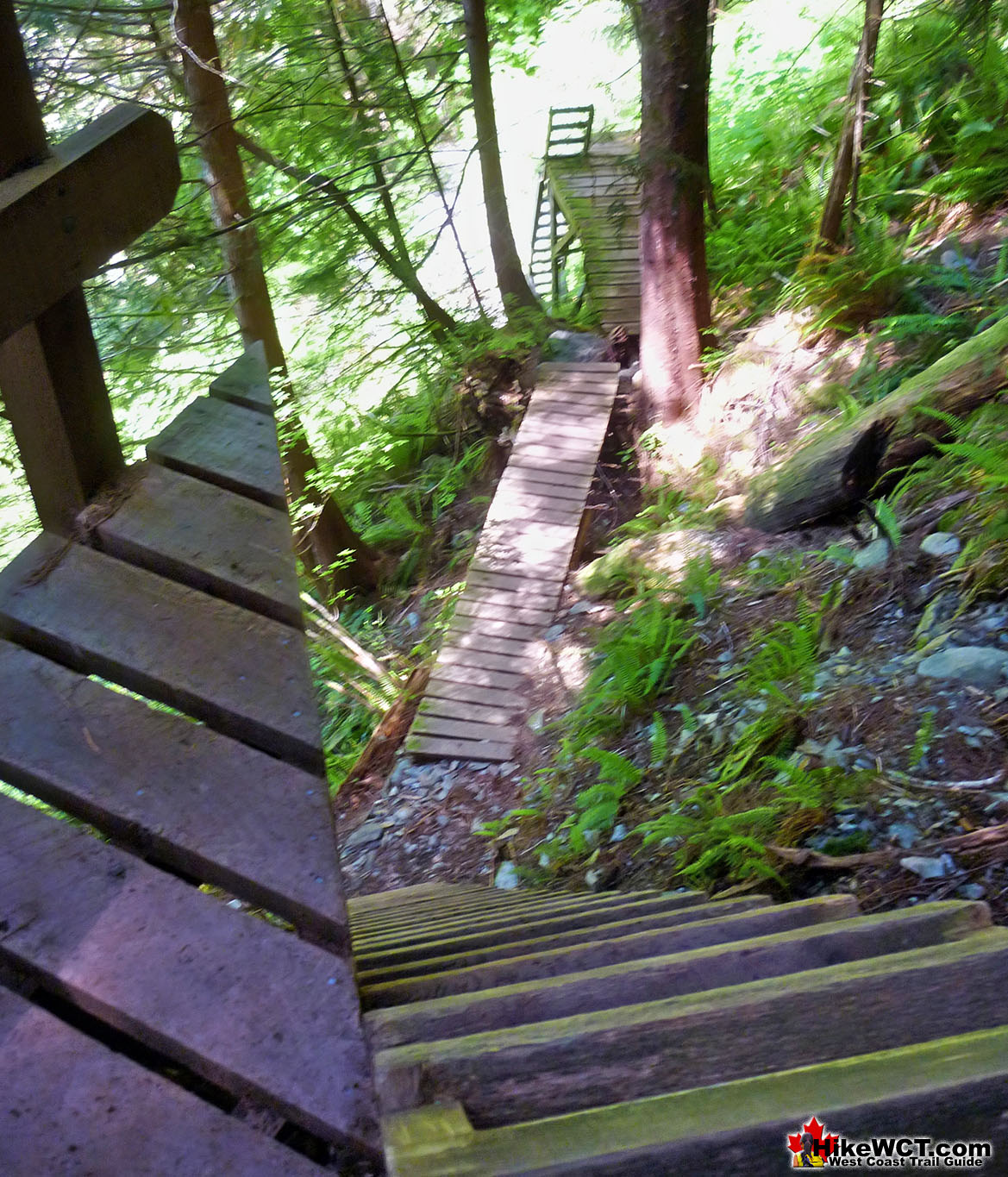
More West Coast Trail Campsites
Walbran Creek Campsite at 53km
![]() Walbran Creek at 53k is home to possibly the best, and most unappreciated campsites on the West Coast Trail. It encapsulates so much that makes the West Coast Trail truly wonderful. The expansive beach which seems purpose built for enjoyability is flanked by scenic cliffs and creek on one side, the pacific ocean on the other, and backed by the emerald coloured Walbran Creek that flows through the jungle valley spanned by a cable car crossing! Of the list of pro's and con's for Walbran Creek, the list is hopelessly lopsided to the pro's. Walbran Creek campsite is reached in the middle of the most challenging, invigorating, stunning, bewildering and breathtaking section of the West Coast Trail. The ladders you encounter heading either direction from the campsite are astounding in size. One after another you ascend and descend the most improbably long and slippery, wooden ladders that always feel solid and safe, despite their obvious age and weathering. Even the cable car crossing is exhilarating. It is a very long one and this one in particular invites you to stop midway and take in the stunning view in either direction. Upstream the view is an emerald coloured creek(though it looks more like a river in size), flanked by a beautifully tangled rainforest jungle on either side.
Walbran Creek at 53k is home to possibly the best, and most unappreciated campsites on the West Coast Trail. It encapsulates so much that makes the West Coast Trail truly wonderful. The expansive beach which seems purpose built for enjoyability is flanked by scenic cliffs and creek on one side, the pacific ocean on the other, and backed by the emerald coloured Walbran Creek that flows through the jungle valley spanned by a cable car crossing! Of the list of pro's and con's for Walbran Creek, the list is hopelessly lopsided to the pro's. Walbran Creek campsite is reached in the middle of the most challenging, invigorating, stunning, bewildering and breathtaking section of the West Coast Trail. The ladders you encounter heading either direction from the campsite are astounding in size. One after another you ascend and descend the most improbably long and slippery, wooden ladders that always feel solid and safe, despite their obvious age and weathering. Even the cable car crossing is exhilarating. It is a very long one and this one in particular invites you to stop midway and take in the stunning view in either direction. Upstream the view is an emerald coloured creek(though it looks more like a river in size), flanked by a beautifully tangled rainforest jungle on either side.
Added to the serenity, you get the ever-present ocean view in front of you. The United States is easily visibly across Juan de Fuca Strait, and you can imagine the ships just a century ago reaching Cape Flattery, the point of land in the US, across from you extending into the Pacific. Often sailing up from San Francisco in calm weather, only to reach Cape Flattery and get hit by a winter storm that batters your ship and blinds you in fog. You then creep into what you think is Juan de Fuca Strait towards Puget Sound, Victoria or Vancouver, when in fact the strong current has brought you into the teeth of the Graveyard of the Pacific. Hundreds of ships were driven into the rocky flank of Vancouver Island and became victims of this treacherous corner of the world. This sinister past of course necessitated the creation of the West Coast Trail which would go on to save hundreds of shipwreck survivors and in 1970 become an officially defined national park.
Walbran Creek campsite continued here...
Cullite Cove Campsite at 58km
![]() Cullite Cove is a wonderful campsite on the West Coast Trail at the 58 kilometre mark. Yet another beautiful campsite you will find on the West Coast Trail. It has everything, a lovely wooded area with clearings for tents and campfires. Stunning views all around. A terrific, rocky beach, beautifully hemmed in by beautiful cliffs on either side. Cullite Creek pours into the cove, making for a stunning, albeit freezing swim into the surf. Cullite Cove is a close to perfect as a campsite can get. Cullite Creek is beautiful, crystal clear green, big and slow moving into Cullite Cove, a picture perfect beach hemmed in by majestic cliffs on both sides. Just off the beach, several campsites are laid out, hidden in the trees. Your first thought on seeing this site is to want to stay for a week. The campsite here is often very quiet as everybody seems to camp at Camper Bay just 4 kilometres away and doesn't even drop down the short detour off the main trail to Cullite Cove.
Cullite Cove is a wonderful campsite on the West Coast Trail at the 58 kilometre mark. Yet another beautiful campsite you will find on the West Coast Trail. It has everything, a lovely wooded area with clearings for tents and campfires. Stunning views all around. A terrific, rocky beach, beautifully hemmed in by beautiful cliffs on either side. Cullite Creek pours into the cove, making for a stunning, albeit freezing swim into the surf. Cullite Cove is a close to perfect as a campsite can get. Cullite Creek is beautiful, crystal clear green, big and slow moving into Cullite Cove, a picture perfect beach hemmed in by majestic cliffs on both sides. Just off the beach, several campsites are laid out, hidden in the trees. Your first thought on seeing this site is to want to stay for a week. The campsite here is often very quiet as everybody seems to camp at Camper Bay just 4 kilometres away and doesn't even drop down the short detour off the main trail to Cullite Cove.
Cullite Cove campsite continued here...
Camper Bay Campsite at 62km
![]() Camper Bay at 62k Camper Creek is beautiful, similar to Cullilte Cove there are cliffs on either side. The downside is crowding. It's the first really good campsite from the Port Renfrew direction. Still, it's spacious. Another downside is the proximity of Port Renfrew. It's hard to get the wilderness feeling when you can see boats pass every minute and cruise ships in the distance. Camper Bay is often home to quite a number of campers. You always find the campsite lined with tents along the treeline packed so close together as to hear each others conversations. A bit too cozy, but on the other hand, Camper Bay is a great place to socialize with fellow campers. The linear tent site arrangement make it necessary for you and others to walk past several tents to do almost anything. So you get fairly well acquainted with your fellow West Coast Trail hikers. The trail from Camper Bay in both directions is pretty brutal with ladders and erratic terrain, so you and your fellow campers with be exhausted. Cullite Cove is a wonderful campsite on the West Coast Trail at the 58 kilometre mark. One of the nicest campsites you will find on the West Coast Trail. It has everything, a lovely wooded area with clearings for tents and campfires. Stunning views all around. A terrific, rocky beach, beautifully hemmed in by beautiful cliffs on either side. Cullite Creek pours into the cove, making for a stunning, albeit freezing swim into the surf. The campsite here is often very quiet as everybody seems to camp at Camper Creek just 4 kilometres away and doesn't even drop down the short detour off the main trail to Cullite Cove.
Camper Bay at 62k Camper Creek is beautiful, similar to Cullilte Cove there are cliffs on either side. The downside is crowding. It's the first really good campsite from the Port Renfrew direction. Still, it's spacious. Another downside is the proximity of Port Renfrew. It's hard to get the wilderness feeling when you can see boats pass every minute and cruise ships in the distance. Camper Bay is often home to quite a number of campers. You always find the campsite lined with tents along the treeline packed so close together as to hear each others conversations. A bit too cozy, but on the other hand, Camper Bay is a great place to socialize with fellow campers. The linear tent site arrangement make it necessary for you and others to walk past several tents to do almost anything. So you get fairly well acquainted with your fellow West Coast Trail hikers. The trail from Camper Bay in both directions is pretty brutal with ladders and erratic terrain, so you and your fellow campers with be exhausted. Cullite Cove is a wonderful campsite on the West Coast Trail at the 58 kilometre mark. One of the nicest campsites you will find on the West Coast Trail. It has everything, a lovely wooded area with clearings for tents and campfires. Stunning views all around. A terrific, rocky beach, beautifully hemmed in by beautiful cliffs on either side. Cullite Creek pours into the cove, making for a stunning, albeit freezing swim into the surf. The campsite here is often very quiet as everybody seems to camp at Camper Creek just 4 kilometres away and doesn't even drop down the short detour off the main trail to Cullite Cove.
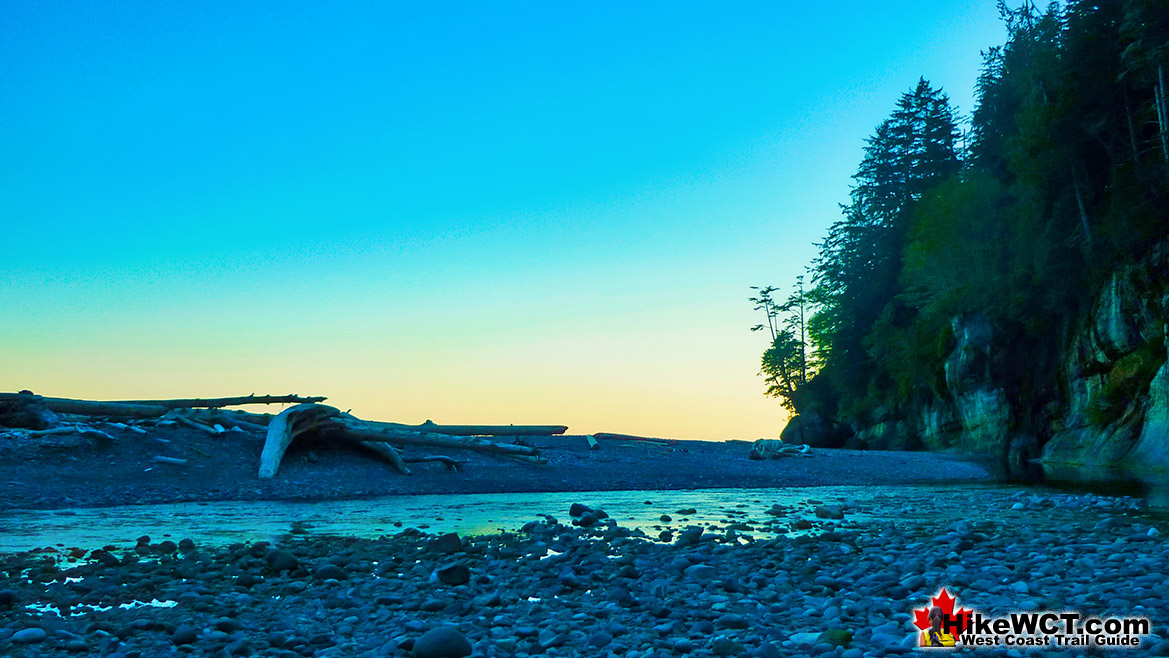
West Coast Trail Campsites
![]() Pachena Bay Campground
Pachena Bay Campground ![]() Michigan Creek at 12k
Michigan Creek at 12k ![]() Darling River at 14k
Darling River at 14k ![]() Orange Juice Creek at 15k
Orange Juice Creek at 15k ![]() Tsocowis Creek at 16.5k
Tsocowis Creek at 16.5k ![]() Klanawa River at 23k
Klanawa River at 23k ![]() Tsusiat Falls at 25k
Tsusiat Falls at 25k ![]() Cribs Creek at 42k
Cribs Creek at 42k ![]() Carmanah Creek at 46k
Carmanah Creek at 46k ![]() Bonilla Creek at 48k
Bonilla Creek at 48k ![]() Walbran Creek at 53k
Walbran Creek at 53k ![]() Cullite Cove at 58k
Cullite Cove at 58k ![]() Camper Bay at 62k
Camper Bay at 62k ![]() Thrasher Cove at 70k
Thrasher Cove at 70k ![]() Pacheedaht Campground
Pacheedaht Campground
Shipwrecks Near Thrasher Cove - West Coast Trail
The Duchess of Argyle Shipwreck at 58km
![]() The Duchess of Argyle met her end at the mouth of Cullite Cove back at the 58 kilometre mark of the West Coast Trail. She was a huge, four masted barque with an iron hull and watertight bulkheads. She was sailing in ballast from San Francisco on October 13th, 1887, bound for Vancouver. She would pick up lumber and sail for Melbourne, Australia. Sailing up the coast from San Francisco, the good weather turned bad on October 16th. For almost two weeks a powerful gale hammered the Duchess of Argyle. When the storm finally let up, Cape Flattery was sighted about 20 miles away. The ship, unable to find wind, floated with the current, inching towards Juan de Fuca Strait. Soon a small tug boat arrived to assist the enormous becalmed ship through the strait. They lowered sails and got the hawser aboard to connect the ships. The captain of the tug quickly realized that his vessel was too small to manage such a huge ship rolling in the seas. Cape Flattery was still about 14 miles distant and concealed by fog much of the time. The Duchess of Argyle wallowed in the current until midnight when a strong eastward gale gripped the ship once more. They sailed for Cape Flattery until the wind died again and on November 1st the fog lifted revealing Cape Flattery just 3 miles away. Suddenly the fog returned again, thicker than ever. They crawled forward slowly hoping for the fog to lift again. The fog didn't let up and at 315pm on November 3rd, breakers were heard...
The Duchess of Argyle met her end at the mouth of Cullite Cove back at the 58 kilometre mark of the West Coast Trail. She was a huge, four masted barque with an iron hull and watertight bulkheads. She was sailing in ballast from San Francisco on October 13th, 1887, bound for Vancouver. She would pick up lumber and sail for Melbourne, Australia. Sailing up the coast from San Francisco, the good weather turned bad on October 16th. For almost two weeks a powerful gale hammered the Duchess of Argyle. When the storm finally let up, Cape Flattery was sighted about 20 miles away. The ship, unable to find wind, floated with the current, inching towards Juan de Fuca Strait. Soon a small tug boat arrived to assist the enormous becalmed ship through the strait. They lowered sails and got the hawser aboard to connect the ships. The captain of the tug quickly realized that his vessel was too small to manage such a huge ship rolling in the seas. Cape Flattery was still about 14 miles distant and concealed by fog much of the time. The Duchess of Argyle wallowed in the current until midnight when a strong eastward gale gripped the ship once more. They sailed for Cape Flattery until the wind died again and on November 1st the fog lifted revealing Cape Flattery just 3 miles away. Suddenly the fog returned again, thicker than ever. They crawled forward slowly hoping for the fog to lift again. The fog didn't let up and at 315pm on November 3rd, breakers were heard...
Duchess of Argyle shipwreck continued here...
The John Marshall Shipwreck at 62.3km
![]() The John Marshall shipwreck is located under the waves just outside the mouth of Camper Bay at the 62 kilometre mark of the West Coast Trail. Owing to the great difficulty and slow progress hikers are forced to take on this section of the West Coast Trail, nearly everyone camps at Camper Bay. If you do, you will be sleeping near this shipwreck that occurred here in 1860. The John Marshall was an old eastern built, 3 masted ship of 321 tons. Sailing in from San Francisco with a crew of 10, she was heading to Seabeck, Washington in ballast to pick up a load of lumber. Off Cape Flattery the John Marshall met a raging storm that left her beached in front of Camper Bay. There seem to be few details of this shipwreck, however, local natives reported that two ships came ashore from the storm that night. It had been assumed that she foundered off Cape Flattery with no survivors. So it was quite a surprise to find her ashore at Camper Bay, with her hull visible at low tide and her masts, spars and rigging scattered on the beach. There are no details of deaths from this shipwreck, so it is assumed that there was no loss of life.
The John Marshall shipwreck is located under the waves just outside the mouth of Camper Bay at the 62 kilometre mark of the West Coast Trail. Owing to the great difficulty and slow progress hikers are forced to take on this section of the West Coast Trail, nearly everyone camps at Camper Bay. If you do, you will be sleeping near this shipwreck that occurred here in 1860. The John Marshall was an old eastern built, 3 masted ship of 321 tons. Sailing in from San Francisco with a crew of 10, she was heading to Seabeck, Washington in ballast to pick up a load of lumber. Off Cape Flattery the John Marshall met a raging storm that left her beached in front of Camper Bay. There seem to be few details of this shipwreck, however, local natives reported that two ships came ashore from the storm that night. It had been assumed that she foundered off Cape Flattery with no survivors. So it was quite a surprise to find her ashore at Camper Bay, with her hull visible at low tide and her masts, spars and rigging scattered on the beach. There are no details of deaths from this shipwreck, so it is assumed that there was no loss of life.
John Marshall shipwreck continued here...
The William Tell Shipwreck at 64.2km
![]() Less than a kilometre past the John Marshall shipwreck you will pass the William Tell shipwreck. Considerably larger than the John Marshall, the William Tell was a 1153 ton, 3 masted ship that wrecked in the Graveyard of the Pacific on December 23rd, 1865. She sailed straight into the reef in front of what is now the 64 kilometre mark of the West Coast Trail. The William Tell was built in New York in 1850. She sailed in the North Atlantic for a few years before branching out to more distant ports. On her final voyage in 1865, she was inbound from South Africa in ballast, heading to a port in the Puget Sound. She managed to sail into Juan de Fuca Strait, however stormy weather and strong currents moved her considerably far west. Blindly sailing in thick fog and the darkness of night, the William Tell smashed into the reef between Owen Point and Camper Bay. The crew of 22 men managed to scramble safely to shore and made their way to Owen Point where they lit signal fires. Their fires were spotted from the harbour of Port San Juan(Port Renfrew). They were picked up and later brought back to Victoria by a local trading schooner.
Less than a kilometre past the John Marshall shipwreck you will pass the William Tell shipwreck. Considerably larger than the John Marshall, the William Tell was a 1153 ton, 3 masted ship that wrecked in the Graveyard of the Pacific on December 23rd, 1865. She sailed straight into the reef in front of what is now the 64 kilometre mark of the West Coast Trail. The William Tell was built in New York in 1850. She sailed in the North Atlantic for a few years before branching out to more distant ports. On her final voyage in 1865, she was inbound from South Africa in ballast, heading to a port in the Puget Sound. She managed to sail into Juan de Fuca Strait, however stormy weather and strong currents moved her considerably far west. Blindly sailing in thick fog and the darkness of night, the William Tell smashed into the reef between Owen Point and Camper Bay. The crew of 22 men managed to scramble safely to shore and made their way to Owen Point where they lit signal fires. Their fires were spotted from the harbour of Port San Juan(Port Renfrew). They were picked up and later brought back to Victoria by a local trading schooner.
William Tell shipwreck continued here...
The Revere Shipwreck at 69km
![]() The Revere shipwreck lays at the bottom of Port San Juan between Thrasher Cove and Owen Point. Thrasher Cove is the first or last West Coast Trail campsite you will encounter. She was a large 3 masted barque of 829 tons, built in 1849 in Medford, Massachusetts. She became a victim of the Graveyard of the Pacific on September 9th, 1883. The Revere spent much of her life sailing back and forth from Liverpool in the 1850's. In 1883 she was sailing from Honolulu in ballast for a port in Puget Sound. She was carrying a crew of 13 plus 4 passengers. Nearing Cape Flattery, the Revere found herself in thick fog and calm winds. Unable to see, she was carried by the notorious Juan de Fuca Strait current, across the strait. On the morning of Sunday, September 9th, 1883 the crew heard breaking waves and rushed to drop an anchor. It was too late, however, as the Revere slid around and hit the reef broadside. Breakers pounded her against the rocky coast of Vancouver Island as the crew escaped in lifeboats. The Revere was battered by the waves and broke up in the coming days and weeks. The crew was ferried to Victoria by the local Indians in canoes.
The Revere shipwreck lays at the bottom of Port San Juan between Thrasher Cove and Owen Point. Thrasher Cove is the first or last West Coast Trail campsite you will encounter. She was a large 3 masted barque of 829 tons, built in 1849 in Medford, Massachusetts. She became a victim of the Graveyard of the Pacific on September 9th, 1883. The Revere spent much of her life sailing back and forth from Liverpool in the 1850's. In 1883 she was sailing from Honolulu in ballast for a port in Puget Sound. She was carrying a crew of 13 plus 4 passengers. Nearing Cape Flattery, the Revere found herself in thick fog and calm winds. Unable to see, she was carried by the notorious Juan de Fuca Strait current, across the strait. On the morning of Sunday, September 9th, 1883 the crew heard breaking waves and rushed to drop an anchor. It was too late, however, as the Revere slid around and hit the reef broadside. Breakers pounded her against the rocky coast of Vancouver Island as the crew escaped in lifeboats. The Revere was battered by the waves and broke up in the coming days and weeks. The crew was ferried to Victoria by the local Indians in canoes.
Revere shipwreck continued here...
The Cyrus Shipwreck at 75km
![]() The shipwreck Cyrus is located just down from the West Coast Trail's Gordon River trailhead. If you stand at the wonderful, long, sandy beach that spans the width of Port San Juan and look out over the ocean on your right, you will be looking over the patch of ocean where the Cyrus met her end. The Cyrus was a 213 ton, two masted ship, built in 1832. The Cyrus was sailing from Steilacoom, Washington with a cargo of lumber heading to San Francisco. She had sailed this route many times, however on December 23rd, 1858 she ran into a storm off Cape Flattery. Her cargo shifted causing her to list and the crew struggled to sail her into Port San Juan to escape the storm. She managed to limp to safety and anchored along the beach in front of present day Port Renfrew. After the storm had let up, the Cyrus set sail, however was unable to catch enough wind to maneuver and she was forced to anchor again. While at anchor, a southerly squall hit her and snapped the anchor chain. Another anchor was dropped, but it was too late as the Cyrus dragged the anchor until she was driven onto the beach near the mouth of Gordon River. The ship slowly came apart during the following days, her rigging, sails and cargo were mostly salvaged.
The shipwreck Cyrus is located just down from the West Coast Trail's Gordon River trailhead. If you stand at the wonderful, long, sandy beach that spans the width of Port San Juan and look out over the ocean on your right, you will be looking over the patch of ocean where the Cyrus met her end. The Cyrus was a 213 ton, two masted ship, built in 1832. The Cyrus was sailing from Steilacoom, Washington with a cargo of lumber heading to San Francisco. She had sailed this route many times, however on December 23rd, 1858 she ran into a storm off Cape Flattery. Her cargo shifted causing her to list and the crew struggled to sail her into Port San Juan to escape the storm. She managed to limp to safety and anchored along the beach in front of present day Port Renfrew. After the storm had let up, the Cyrus set sail, however was unable to catch enough wind to maneuver and she was forced to anchor again. While at anchor, a southerly squall hit her and snapped the anchor chain. Another anchor was dropped, but it was too late as the Cyrus dragged the anchor until she was driven onto the beach near the mouth of Gordon River. The ship slowly came apart during the following days, her rigging, sails and cargo were mostly salvaged.
Cyrus shipwreck continued here...
Best West Coast Trail Sights & Highlights
West Coast Trail Campsites
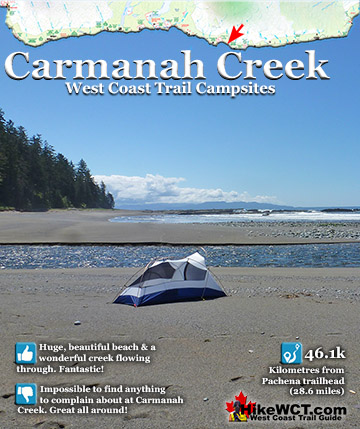
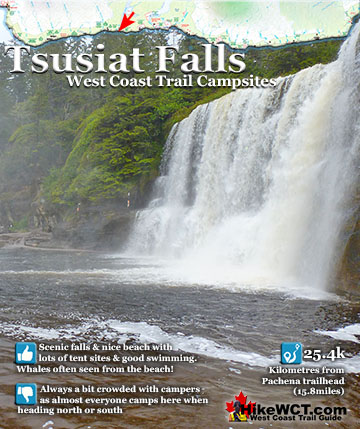
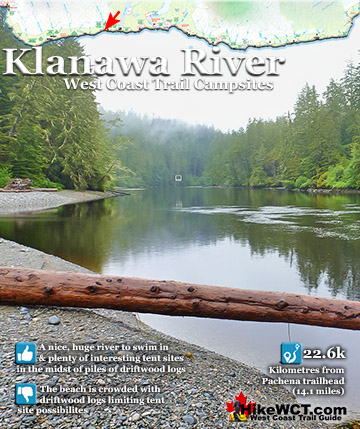
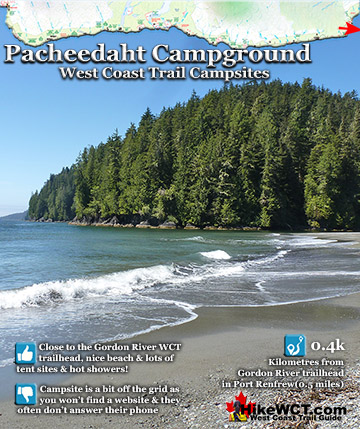
West Coast Trail A to Z
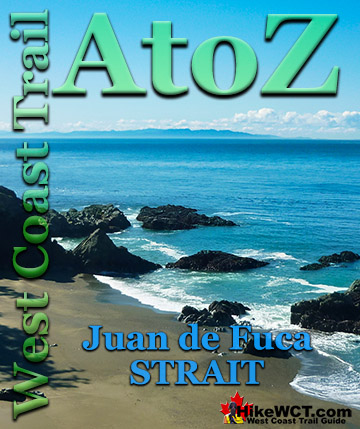
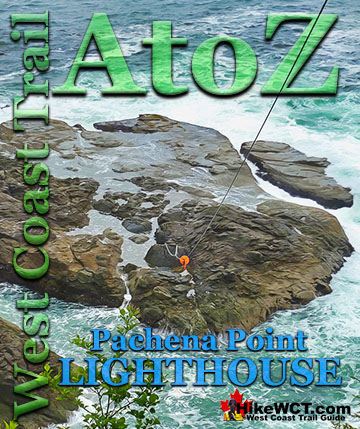
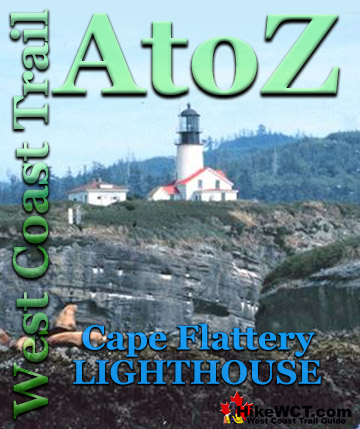
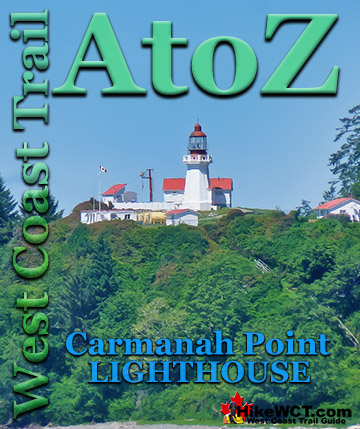
The West Coast Trail by Day
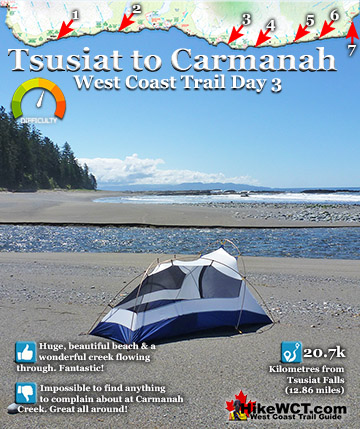
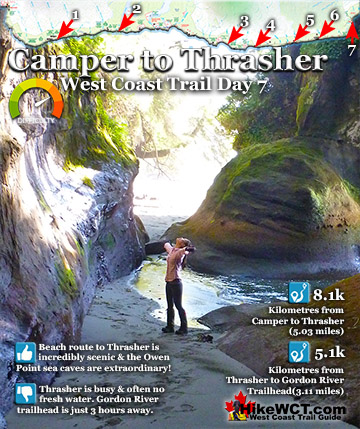
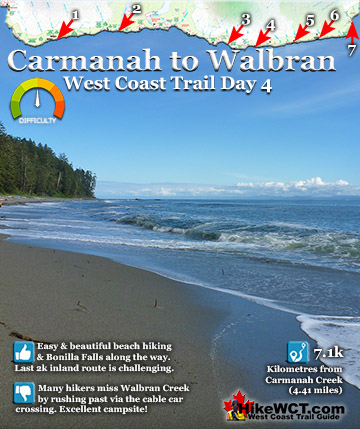
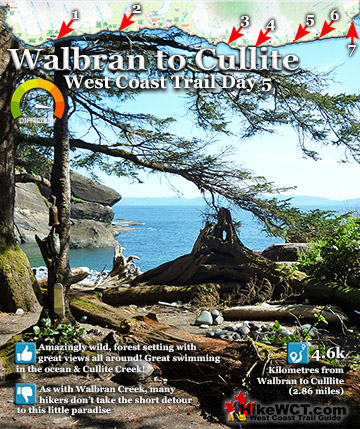
Explore BC Hiking Destinations!
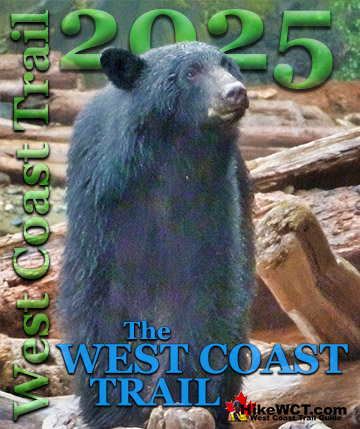
The West Coast Trail

Victoria Hiking Trails
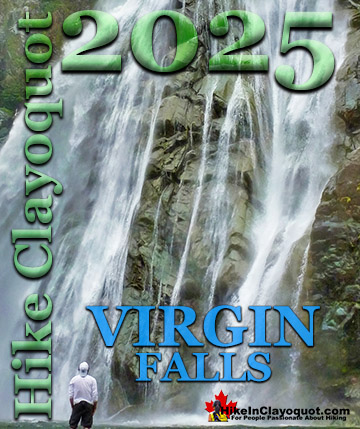
Clayoquot Hiking Trails
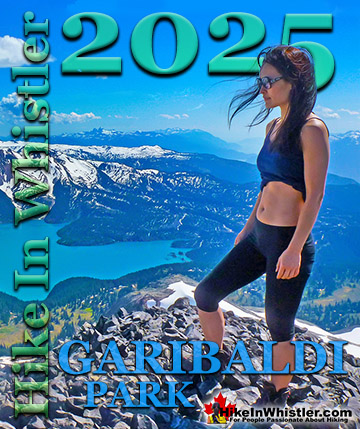
Whistler Hiking Trails
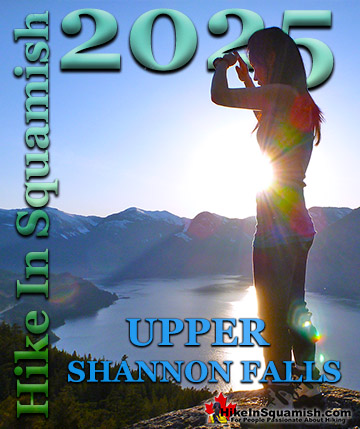
Squamish Hiking Trails

Vancouver Hiking Trails

